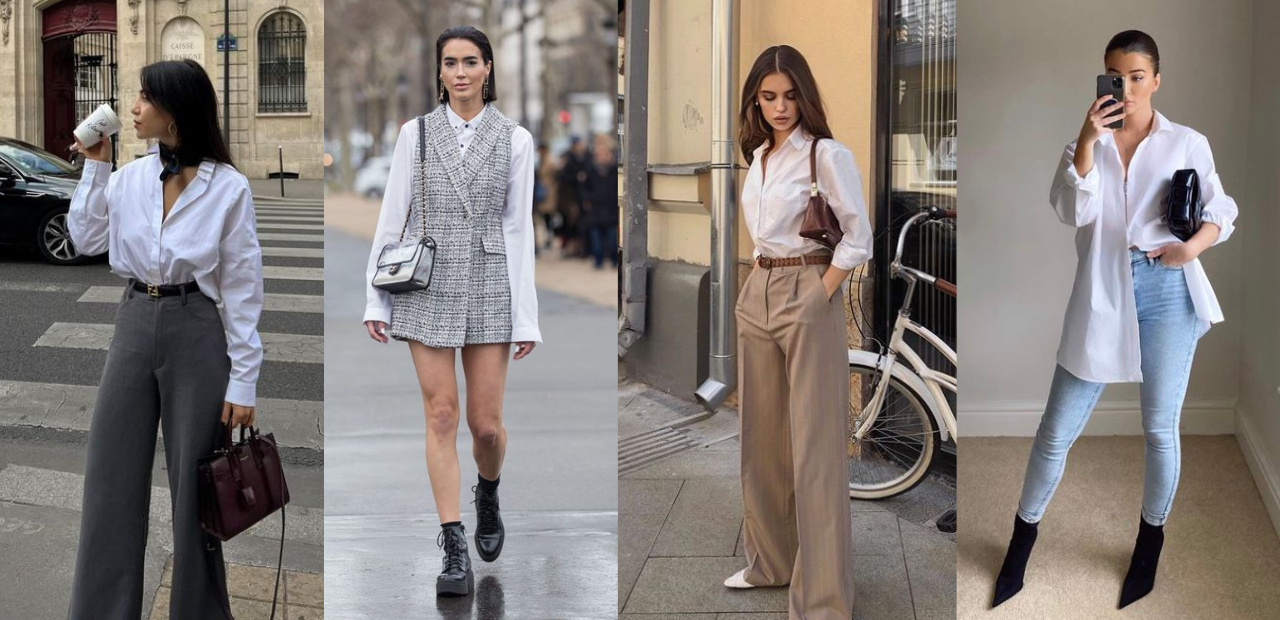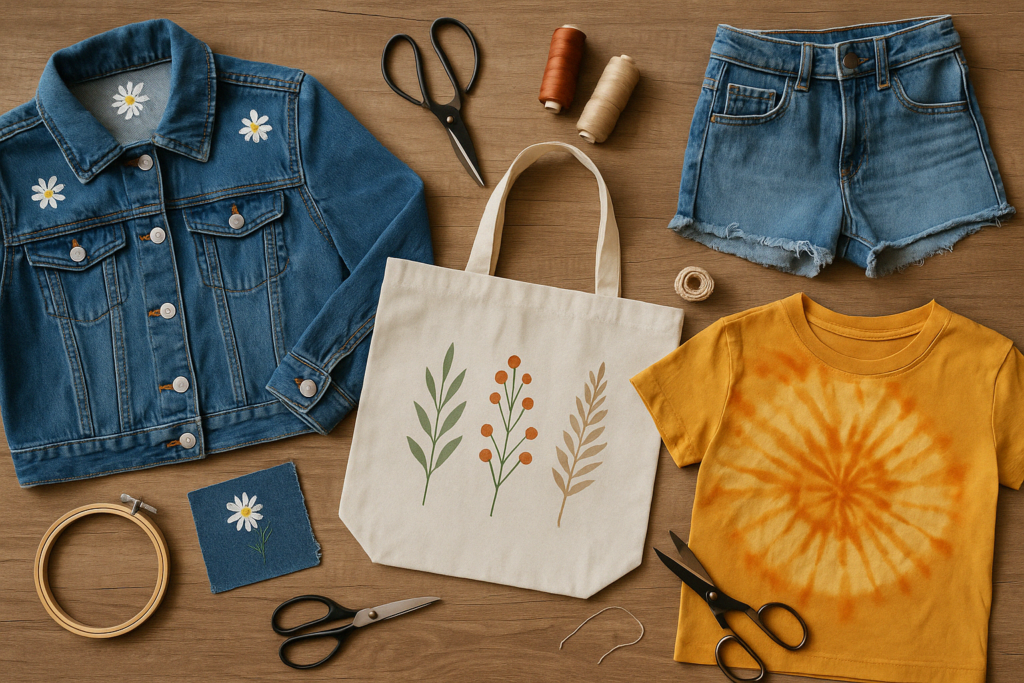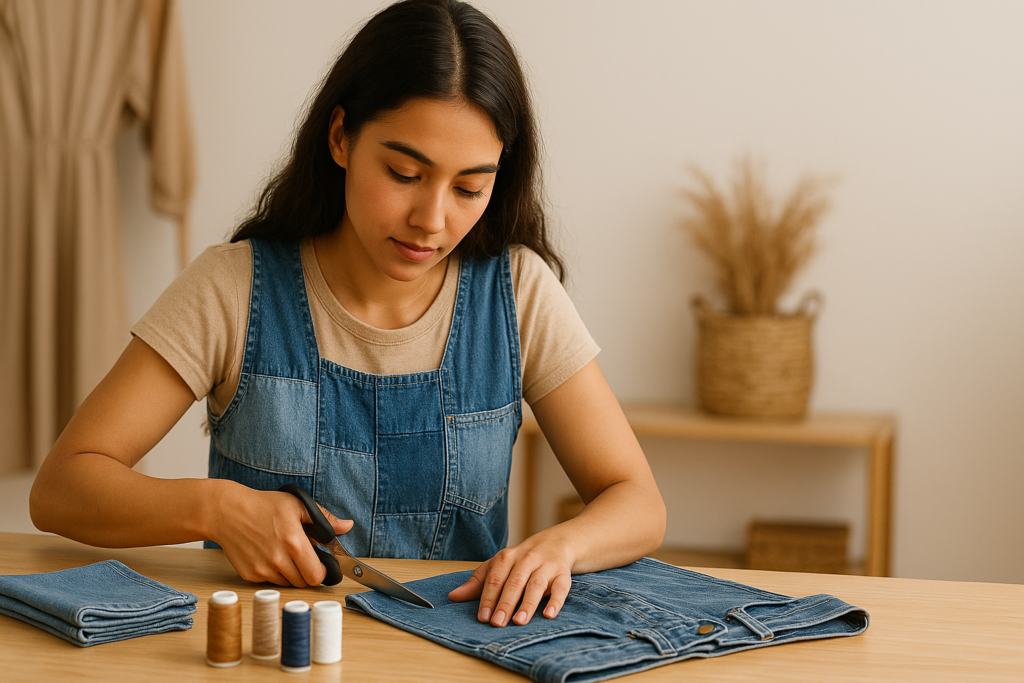
In an era where fast fashion dominates closets and landfills overflow with textile waste, a quiet revolution is reshaping the world of fashion—upcycling and DIY (Do-It-Yourself) fashion. These movements are not just trends; they are bold statements against waste, overconsumption, and the loss of individuality in style. They represent creativity, consciousness, and the power to transform the ordinary into something extraordinary.
Whether you’re a fashion enthusiast, a sustainability advocate, or just someone curious about refreshing your wardrobe without buying more, upcycling and DIY fashion offer a powerful way to reconnect with your clothes and the planet.
Upcycling is the process of taking old or discarded clothing and transforming it into something new and better—without breaking the material down entirely. Unlike recycling, which often involves converting materials into raw forms, upcycling preserves the integrity of the item and adds value through creativity.
It could be as simple as turning a worn-out pair of jeans into a trendy tote bag, or as intricate as redesigning a vintage saree into a modern jumpsuit. The goal is to reduce waste, extend the life of garments, and celebrate individual expression.
DIY fashion goes hand-in-hand with upcycling. It puts the tools of creation and customization into the hands of the wearer. From patchwork and embroidery to tie-dye and hand-painting, DIY fashion encourages people to reimagine their clothes and make them uniquely theirs.
What once was a pandemic hobby for many has now become a full-blown movement. Social media is filled with tutorials, thrift flips, and transformation reels that prove one thing: you don’t need a designer label to make a statement—you just need vision and a needle.
The fashion industry is one of the largest polluters in the world. Over 92 million tonnes of textiles are discarded each year. Upcycling directly combats this problem by keeping clothes in use longer and diverting them from landfills.
While sustainable fashion brands are on the rise, many of them remain expensive and inaccessible to the average consumer. Upcycling provides an ethical alternative that’s low-cost and often free. It allows everyone, regardless of income, to participate in conscious fashion.
In a world of mass-produced trends, upcycling gives people the power to stand out. It’s a celebration of individuality and creativity. No two upcycled pieces are the same, and each one tells a story—of innovation, of culture, and of personality.
Learning to sew, dye, mend, and alter clothing is empowering. It fosters independence, mindfulness, and problem-solving. Many women around the world are using these skills not only for personal style but also to start home-based businesses and support their families.
You don’t need to be a professional tailor to start. Here are a few fun and approachable ideas for beginners:
Cut the sleeves and neckline of an old oversized T-shirt, hem the edges, and voila! A stylish summer tank.
Use leftover denim scraps to patch up holes, create contrast panels, or add decorative accents to jackets and jeans.
Turn your old sarees into skirts, dresses, or scarves. The fabric is often luxurious and timeless, perfect for revamping.
Add hand-stitched designs, monograms, or patterns to plain tops and bags for a personalized touch.
Use turmeric, beetroot, or tea to naturally dye clothes at home. It’s fun, chemical-free, and uniquely beautiful.
Leftover fabric from tailoring? Use it to make hair ties, headbands, belts, or even earrings.


These cultural traditions remind us that upcycling is not just sustainable—it’s soulful.
Platforms like Instagram, Pinterest, and TikTok have become breeding grounds for upcycling ideas. The hashtags #UpcycledFashion, #ThriftFlip, and #DIYStyle boast millions of posts, proving that this movement is global, youthful, and growing fast.
Young creators are building brands purely around remade fashion. What was once niche is now aspirational—proof that sustainability and style can coexist beautifully.
One of the most powerful aspects of DIY and upcycling is its role in education. Schools, community centers, and NGOs are using fashion projects to:
It’s a way to connect the dots between fashion, environment, economy, and creativity.
A capsule wardrobe—built on versatile, long-lasting items—can easily incorporate upcycled fashion:
Each item becomes a talking point—and a reflection of your values.
Upcycling and DIY fashion are more than techniques. They are acts of care—care for the planet, care for our clothes, and care for ourselves. In a culture that often encourages mindless consumption, these movements invite us to slow down, reimagine, and create with purpose.
You don’t have to be perfect. You don’t need fancy tools. All you need is an open mind, a pair of scissors, and the belief that fashion can be fun, expressive, and kind—to people and the planet.

SatynMag empowers women with inspiring stories, expert advice, and uplifting content to fuel their strength and dreams
Welcome to Satynmag S Suite, online knowledge platform for career and personal growth. This is where you can empower yourself with cutting edge knowledge, latest know-how and grow.


